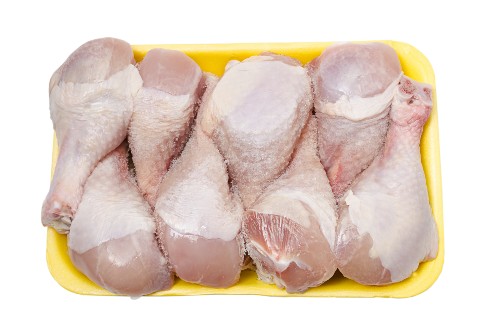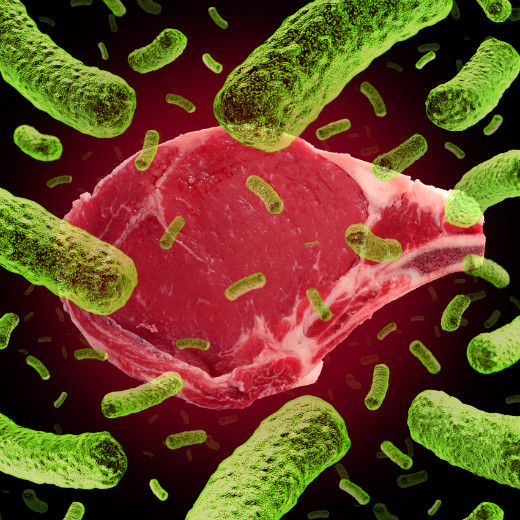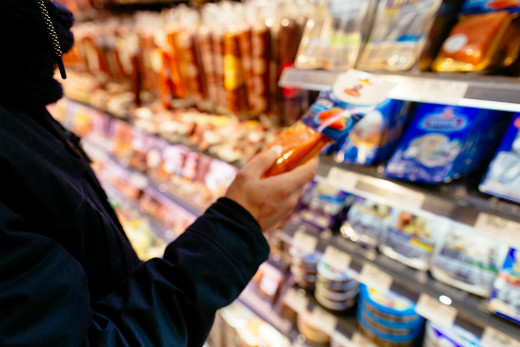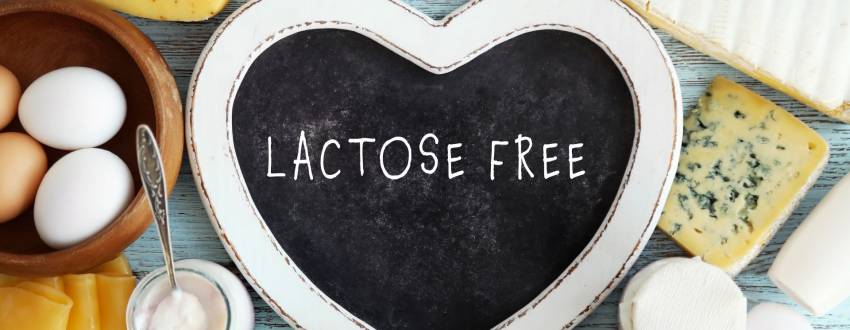With all the amazing food on Kosher.com, it’s natural that we would want to prepare and keep it safely. Even back in Shemos (Exodus) 16:20, some among b’nai Yisrael (the Jewish people) are recorded trying to store leftovers of the mann that sustained them in the wilderness. Unfortunately, when they tried to keep it over until the next morning, it bred worms and stank. (Apparently Shabbos is a great preservative, because the mann kept over from erev Shabbos was still good the next day).
Food safety issues can be complex, and the consequences potentially dire. I encounter a lot of questions about safely cooking and handling food and present this FAQ to address this need.
Disclaimer: I am not a professional microbiologist or toxicologist. In my professional life and in my kitchen, I am trained in and committed to evidence-based practice. With that in mind, I wrote these guidelines based on credible scientific sources. They’re all listed and linked at the end of this article for you to check out yourself (and to call me out on any mistakes or misinformation I may have regretfully included).
In person and on social media, I hear many people base their food handling practices on incomplete knowledge or anecdotal evidence. A lot of people advocate certain unsafe practices because “my grandmother used to do it, and we’re all still alive.” Either those who ate at your grandmother’s table were lucky their food wasn’t contaminated or your grandmother was a very pious woman, and they all survived in her merit. It’s also possible that people did get sick but didn’t notice or associate the illness with a particular meal.
The truth is, following unsafe practices is not a guarantee that someone will get sick or die, but it greatly increases the risk. Compromised food could be ok for someone with a robust immune system, but there are many people, old, young, and otherwise immuno-compromised (e.g., pregnant women, transplant recipients, those undergoing chemotherapy) who are significantly more susceptible to the adverse effects of foodborne pathogens such as illness, death, and miscarriage. (Here’s a list of foods not recommended for people with suppressed immune function.)
So without further ado, let’s address some common food safety questions that arise.
I left my food out, but I had the air conditioning on – can I still use it?
You know how we eat food because it provides sustenance? Well we’re not the only life forms looking for nutrients. Other organisms are also eyeing that last piece of lasagna, and some of them (pathogenic bacteria like salmonella, campylobacter, and E. coli) can make us sick if there are enough of them that have a chance to proliferate.
Just as we find certain environments cozy and some really harsh (Northeast bomb cyclone, anyone?), bacteria and fungi thrive in certain conditions and are suppressed or killed in others. Some bacteria germinate spores as a survival strategy in response to adverse environments. The spores are able to survive conditions that can kill the original bacteria, and they go on to produce dangerous and even fatal toxins (botulism is the result of one such bacterial spore).
A growth range of 41°F (5°C) to 140°F (60°C) was established by the FDA, CDC, and the Food Safety and Inspection Service, which stipulated in the Food Code that potentially hazardous food (e.g., raw meat, fish, poultry, eggs, dairy, cooked foods) not be kept in this “danger zone” for more than two hours. After cooking, food should be cooled from 135°F (57°C) to 70°F (21°C) within two hours and continue cooling to 41°F (5°C) within another four hours from there.

This time period is cumulative, it doesn’t reset every time you put the food back in the fridge. So be mindful of time spent in the car after grocery shopping, on the counter before putting away, on the counter again while prepping for cooking, and so on. It all adds up.
When thawing frozen food, the safest way is in the refrigerator. Another option is to submerge it in a bowl of cold water, replacing the water every 30 minutes.
Because spores are notoriously hardy and difficult to inactivate, re-cooking or boiling contaminated food is not enough to assuage safety concerns. Furthermore, cooking pasteurizes but doesn’t sterilize. This means cooking doesn’t kill all the bacteria, so cooked food can’t be kept indefinitely. Opening a container or package of pasteurized food reintroduces bacteria from the environment, and the food is no longer considered pasteurized.
There are a lot of qualifications to this “danger zone.” Salt content, water availability and reactivity (known as water activity), competition from other microorganisms, pH, and other factors affect the rate of bacterial growth. What’s more, different temperature ranges within the “danger zone” are not equally conducive to bacterial growth. The information presented here is a simplification intended for general use.
That said, this is not an area to gamble with. When handling and cooking food, the best way to keep people from getting sick is following these recommendations (the Food Code addresses safety in retail and food service, but it is certainly applicable to home kitchens). Only someone with adequate knowledge of microbiology is qualified to make decisions about alternate procedures. (This is all the more relevant with sous vide cooking going mainstream. There’s a lot of room for error with serious consequences. For sous vide and all cooking, follow established guidelines and credible authorities.)
I found this stuff in the back of the fridge – can I still eat it? How can I tell?
To keep food out of the “danger zone,” refrigerators should be set to maintain a temperature of 40°F (5°C) or below, and freezers at 0°F (-18°C) or below. Even so, some pathogenic bacteria such as listeria can still grow.
There’s another kind of bacteria – spoilage bacteria (and fungi, too). These bacteria don’t necessarily make food dangerous to eat, but they are responsible for making it unappetizing and for the development of bad tastes, smells, and textures (a change in color of meat or poultry is not an indicator of spoilage on its own).

There’s definitely a range, and these spoilage and fermentation processes can yield not just complex, but desirable flavors. Some such prized foods include: bread, wine, beer, cheese, miso, katsuobushi, kombucha, pickles, charcuterie, sauerkraut and kimchi, yogurt, fish sauce, vinegar, soy sauce, and tempeh. I can go on, but I think you get the point. Koji, the mold responsible for miso, tamari, sake, and other foods, is so esteemed that it is called the “national fungus” of Japan.
For all you food sniffers out there, the smell test is an unreliable and dangerous way to decide whether food is safe to eat. It only tells you whether the food is spoiled without giving any indication of its safety. Foods overrun by pathogenic bacteria don’t generally appear, smell, or taste any different than they did when they were safe to eat. Food can smell awful and be safe to eat, and it can look and taste fine but kill you.
So how are you supposed to know? Look it up. I use StillTasty.com, a comprehensive food shelf life reference database that draws on governmental and academic research as well as information from food manufacturers. Another option is the Food Keeper site on the US food safety portal, foodsafety.gov.
During a power failure, refrigerator and freezer temperatures can rise to dangerous levels, and freezer items will re-freeze after the power comes back on, so you wouldn’t even know. I use a digital thermometer in my fridge and freezer that records high and low temperatures with a timestamp so I can monitor any excursions. A more low-tech solution is to freeze a cup of water and keep it in the freezer with a coin on top of the ice. If you find the coin submerged inside the ice, it means the water (and your food) melted and eventually refroze. I’m sorry to have to tell, you but in this case your sensitive food items should be thrown out.
Should I be washing my raw meat before cooking?
No way, but you should be washing your produce! People cite concerns about bacteria or “dirty” conditions at the butcher shop as reasons they wash their meat. Not only will washing fail to remove surface bacteria (which will be killed during cooking anyway), splashing water transfers the bacteria to kitchen surfaces, where it can grow and cause illness. This is an unsafe practice.
A recent E. coli outbreak in romaine lettuce underscores the vulnerability of produce to pathogens. The 2011 Listeria outbreak, carried by cantaloupe, killed 30 people and sickened another 116, the most deadly US outbreak in 100 years. Cantaloupe carries a particular risk of pathogens like listeria and salmonella because of the time it spends on the ground and its high surface area. That said, all fruit and vegetables are susceptible. Washing can reduce the risk of getting sick – see here for produce washing guidelines (for safety, not kashrus).
If pesticides are your concern, the best home method to remove them is a soak in a baking soda solution (one tsp. baking soda per two cups of water) for two to 15 minutes, and then rinse in fresh water.
What’s the deal with “Use by” and “Best by” dates?
Aside from infant formula, food product dating on labels is not federally regulated, although most states have their own regulations, and doesn’t refer to food safety. (The regulations for infant formula ensure that it will be used before its ingredients can degrade and offer lower nutritional content than intended.)

The dates aren’t determined by microbial testing; manufacturers simply have panels of taste testers trying food made that day, the day before, and so on, until they decide they don’t like how it tastes. The language used is not standardized or consistent. “Sell by” dates are to help the store with inventory management and don’t give an indication of food safety. “Use by” or “Best by” dates similarly don’t refer to safety; they just indicate when food will be at its best quality and freshness. Beyond that date, you may run into rancidity, discoloration, or other changes to food quality.
When stored and handled properly, most packaged foods can be safely eaten if opened past their printed dates provided you check for spoilage. A bulging can indicates the presence of pathogens that produce gas. Throw these out without opening.
Is it ok to keep food in my car trunk in warm weather?
Were you serious about eating rotten food?
Yup, but don’t do it. Under the right conditions, lactic acid and other bacteria responsible for fermentation rapidly colonize a piece of rotting meat and produce enzymes, toxins, and other goodies that inhibit the growth of pathogenic bacteria. Not only are these foods in advanced stage of putrefaction safe to eat (once you brush away the maggots and get over your gag reflex) but they’ve also been highly sought after by foragers from the Paleolithic era into modern times, and not just out of extreme hunger and desperation. Since they’re effectively pre-digested, they offer more calories and nutrients with less energy expenditure for the eater. Check out Speth (2017) for more fascinating and stomach-turning tidbits. Yay for rotting fish heads, the real staple of the Paleo diet!
But what about…?
With all the various ingredients, preparations, and kitchen setups out there, this guide addresses only a few of the safety issues that can arise. Comment below or email me at [email protected] with more questions to address in a future installment.
You can also call the USDA Meat & Poultry Hotline at 888-MPHotline (888-674-6854) from 10 AM to 4 PM EST, email questions to [email protected], or “Ask Karen,” the FSIS virtual representative, 24/7 at AskKaren.gov.
——————-
SOURCES
Brown, K.L. (2000). Control of bacterial spores. British Medical Bulletin, 56, 158-171.
Bryan, F.L. (2004). The “danger zone” reevaluated. Food Safety Magazine, 2004(Feb.-Mar.), 55-69.
Food and Drug Administration (2013). Food Code 2013: Recommendations of the United States Public Health Service Food and Drug Administration. Retrieved from https://www.fda.gov/downloads/Food/GuidanceRegulation/RetailFoodProtection/FoodCode/UCM374510.pdf
Laksanalamai, P., Joseph, L. A., Silk, B. J., Burall, L. S., Tarr, C. L., Gerner-Smidt, P., & Datta, A. R. (2012). Genomic characterization of Listeria monocytogenes strains involved in a multistate listeriosis outbreak associated with cantaloupe in US. PloS one, 7(7), e42448.
Natural Resources Defense Council and Harvard Law School Food Law and Policy Clinic (2013). The dating game: How confusing food date labels lead to food waste in America. NDRC Report, R:13-09-A
Scallan, E., Hoekstra, R. M., Angulo, F. J., Tauxe, R. V., Widdowson, M. A., Roy, S. L., … & Griffin, P. M. (2011). Foodborne illness acquired in the United States—major pathogens. Emerging Infectious Diseases, 17(1), 7.
Speth, J.D. (2017). Putrid meat and fish in the Eurasian Middle and Upper Paleolithic: Are we missing a key part of Neanderthal and modern human diet? PaleoAnthropology Society, 2017, 44−72.
USDA Food Safety and Inspection Service (2011). The color of meat and poultry. Retrieved from https://www.fsis.usda.gov/wps/wcm/connect/e8dad81f-f7fc-4574-893e-bae20cf8b215/Color_of_Meat_and_Poultry.pdf?MOD=AJPERES
USDA Food Safety and Inspection Service (2016). Food product dating. Retrieved from https://www.fsis.usda.gov/wps/portal/fsis/topics/food-safety-education/get-answers/food-safety-fact-sheets/food-labeling/food-product-dating/food-product-dating
USDA Food Safety and Inspection Service (2016). Keep food safe: Food safety basics. Retrieved from https://www.fsis.usda.gov/wps/portal/fsis/topics/food-safety-education/get-answers/food-safety-fact-sheets/safe-food-handling/keep-food-safe-food-safety-basics/ct_index
Yang, T., Doherty, J., Zhao, B., Kinchla, A. J., Clark, J. M., & He, L. (2017). Effectiveness of commercial and homemade washing agents in removing pesticide residues on and in apples. Journal of Agricultural and Food Chemistry, 65(44), 9744-9752.





